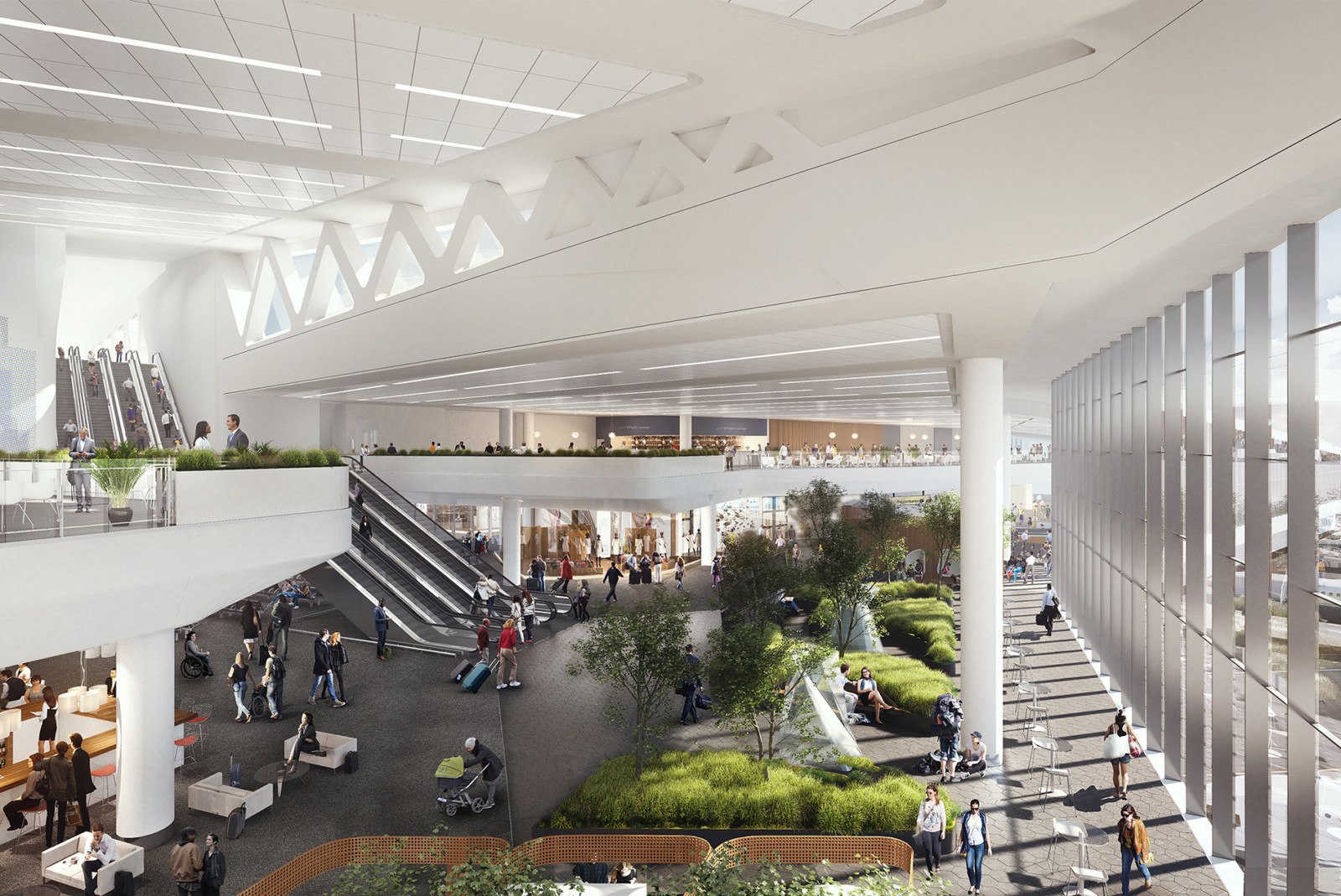As LaGuardia Airport’s most active passenger hub, Terminal B has welcomed hundreds of millions of travelers to New York. Yet in recent years the aging terminal—first opened in 1964 and handling nearly twice the passengers it was designed to accommodate—had become both undersized and outmoded.
Enter the Port Authority of New York and Jersey and an aggressive vision to transform LaGuardia Airport, starting with Terminal B, into a “world-class” airport worthy of the city it calls home. The design of the brand new terminal carries that vision forward with a highly efficient yet adaptable building that vastly improves the passenger experience while paying homage to the architectural grandeur and individuality of New York City.
A Noble Welcome
Built from the ground up, the new Terminal B restores the sense of place that existed when New York Municipal Airport (later renamed LaGuardia Airport) drew thousands of Depression-era visitors just to watch planes take off and land. Serving as a both a civic building and a noble welcome to New York, the terminal headhouse (arrivals and departures hall) has a verticality and grand scale that echo the city itself.
The four-story, 850,000-sq.-ft. headhouse facility houses passenger services and amenities, including airline check-in, baggage drop-off and pick-up, and security. New amenities include extensive food, beverage and retail options. An outdoor dining area offers views of Manhattan’s skyline.
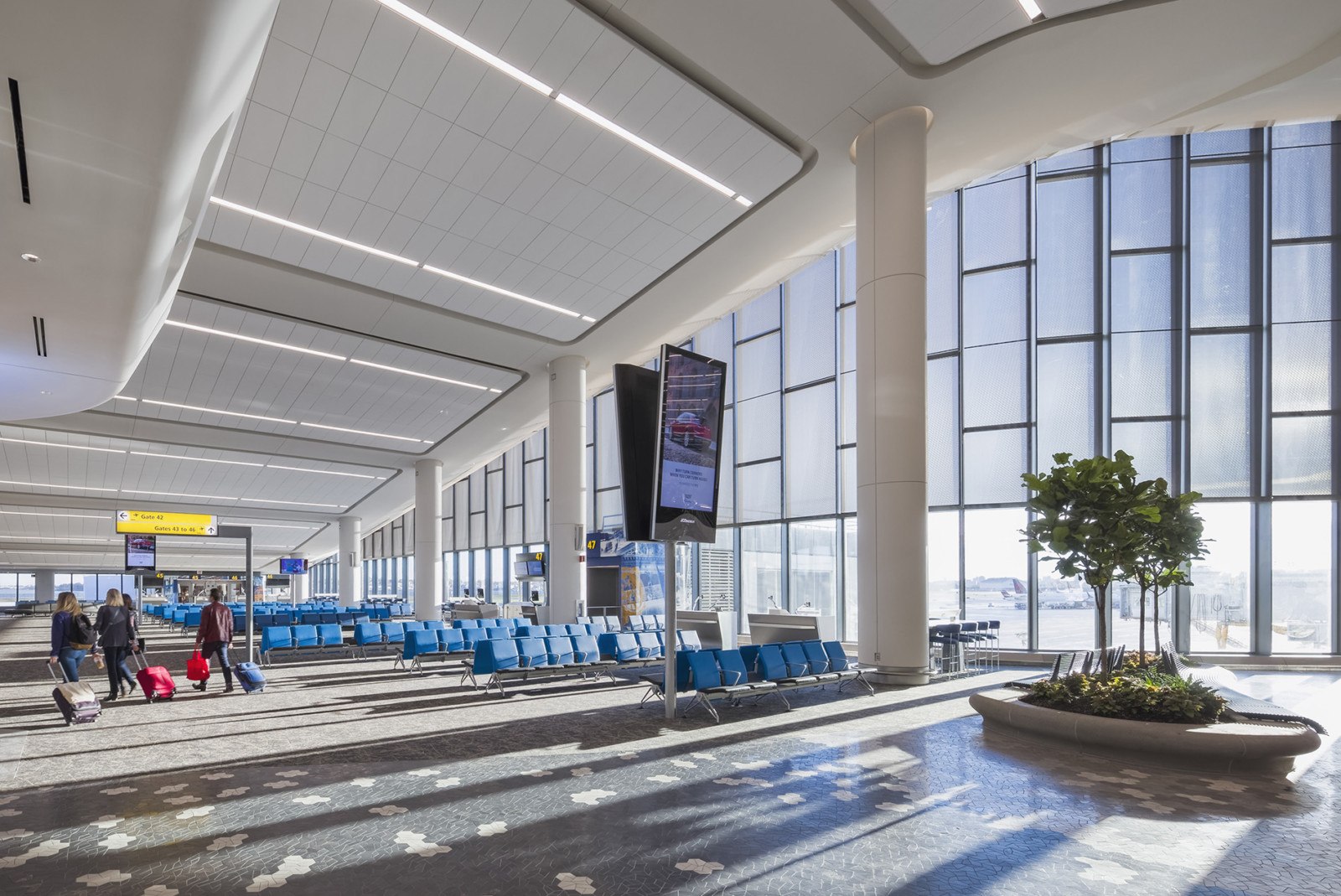
"The architectural design of the new Terminal B is second to none." — Stewart Steeves , CEO of LaGuardia Gateway Partners
The transparent, fluid design celebrates movement. In the spirit of New York’s great high-rises like the Woolworth and Chrysler buildings, long considered cathedrals of commerce, Terminal B serves as a cathedral of mobility.
The steel-framed terminal, with its linear, precisely articulated and dynamic form, presents a modern, cohesive face to both the landside and airside. It replaces a disjointed patchwork of structures with one that closely follows the curves of the Grand Central Parkway (GCP) and the airport access roads.
Pedestrian bridges extending from the terminal to two island concourses enhance airport operations and create a metaphor for New York—a city of islands and bridges. As taxiing planes pass beneath them, these 450-foot-long steel truss pedestrian bridges offer panoramic views onto Manhattan and reinforce the airport’s connections to the city.
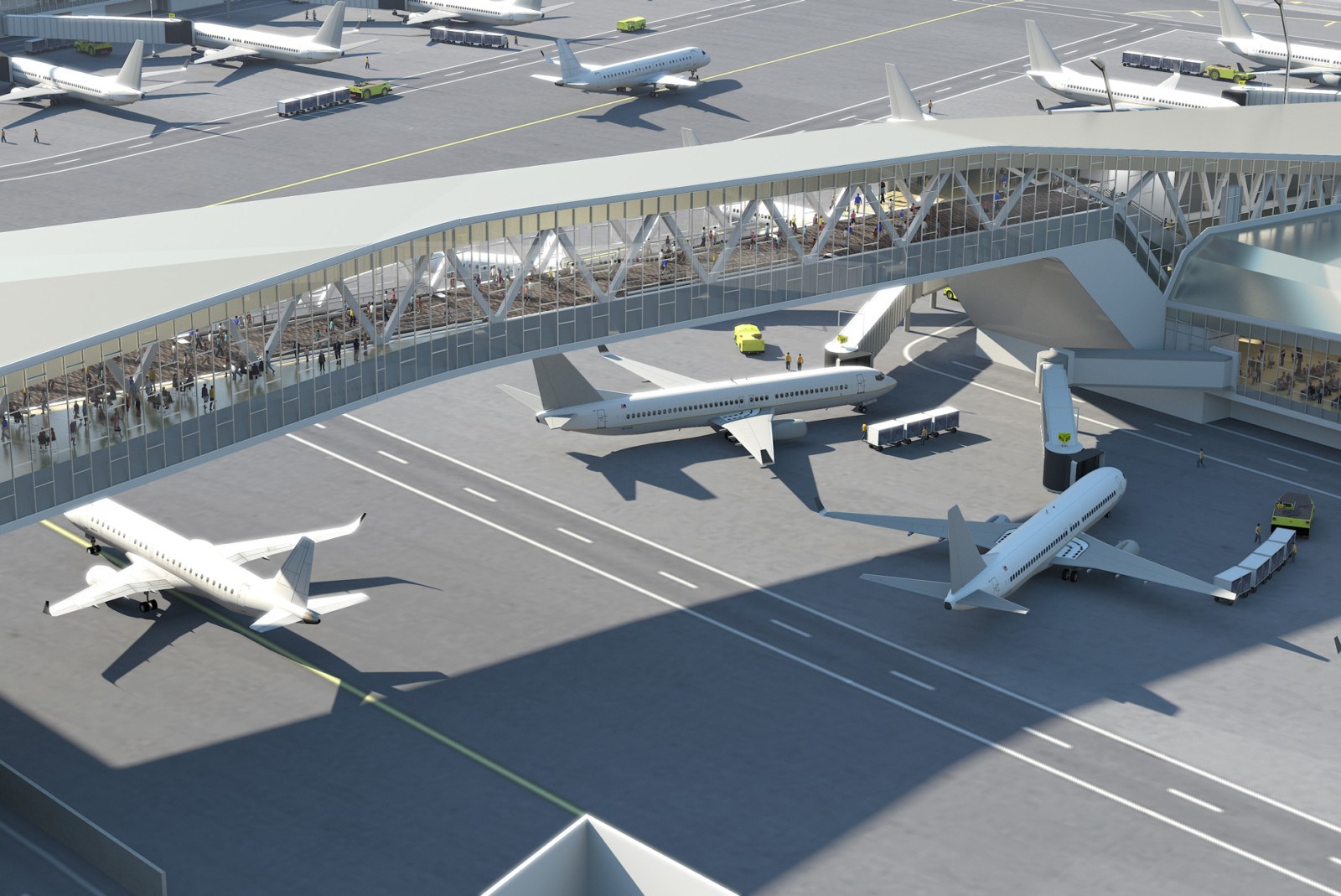
Transformational Passenger Experience
Terminal B celebrates arrivals and departures with equal emphasis, challenging the industry practice of reserving the most monumental spaces for departures while relegating arrivals to low-ceilinged, basement-like zones. At LaGuardia Airport’s new terminal, incoming and outgoing passengers share soaring, airy, grand-scaled sequences punctuated by 60-foot-high ceilings and floor-to-ceiling windows that fill the space with natural light.
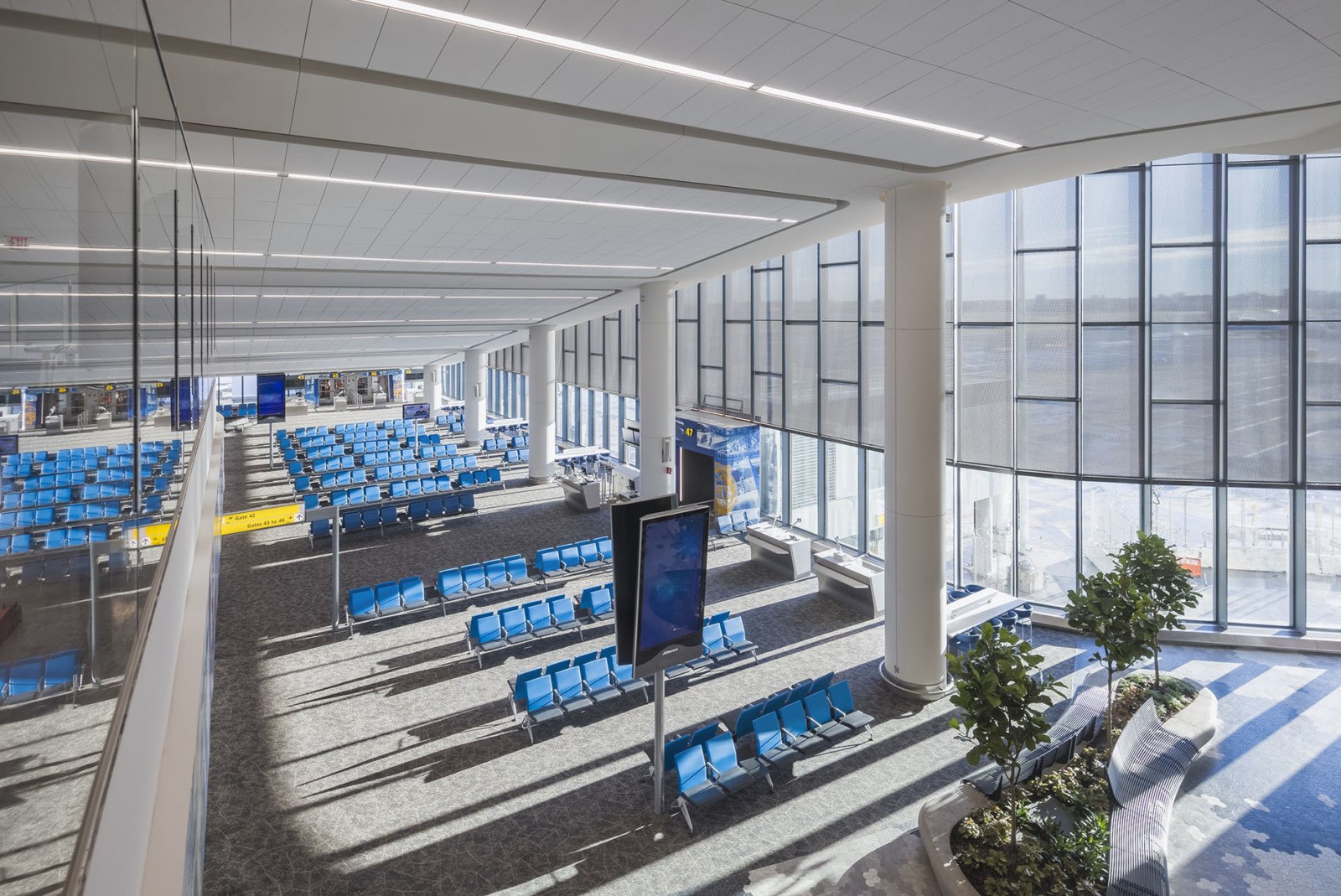

The interior environment evokes the city’s vibrancy, material sensibility and cultural diversity. With an all-encompassing sculptural form, the interior finishes and features accentuate and juxtapose the larger spatial volume, promoting the easy flow of passengers. Retail offerings such as Shake Shack, FAO Schwartz and McNally Jackson Books highlight New York originals.
Indoor green space is modeled after New York City’s urban pocket parks and includes lush landscaping and sculptural benches. Concourses feature ample seating areas with charging stations across all 35 gates, spacious and modern restrooms with floors that literally sparkle, and nursing rooms for mothers and infants.
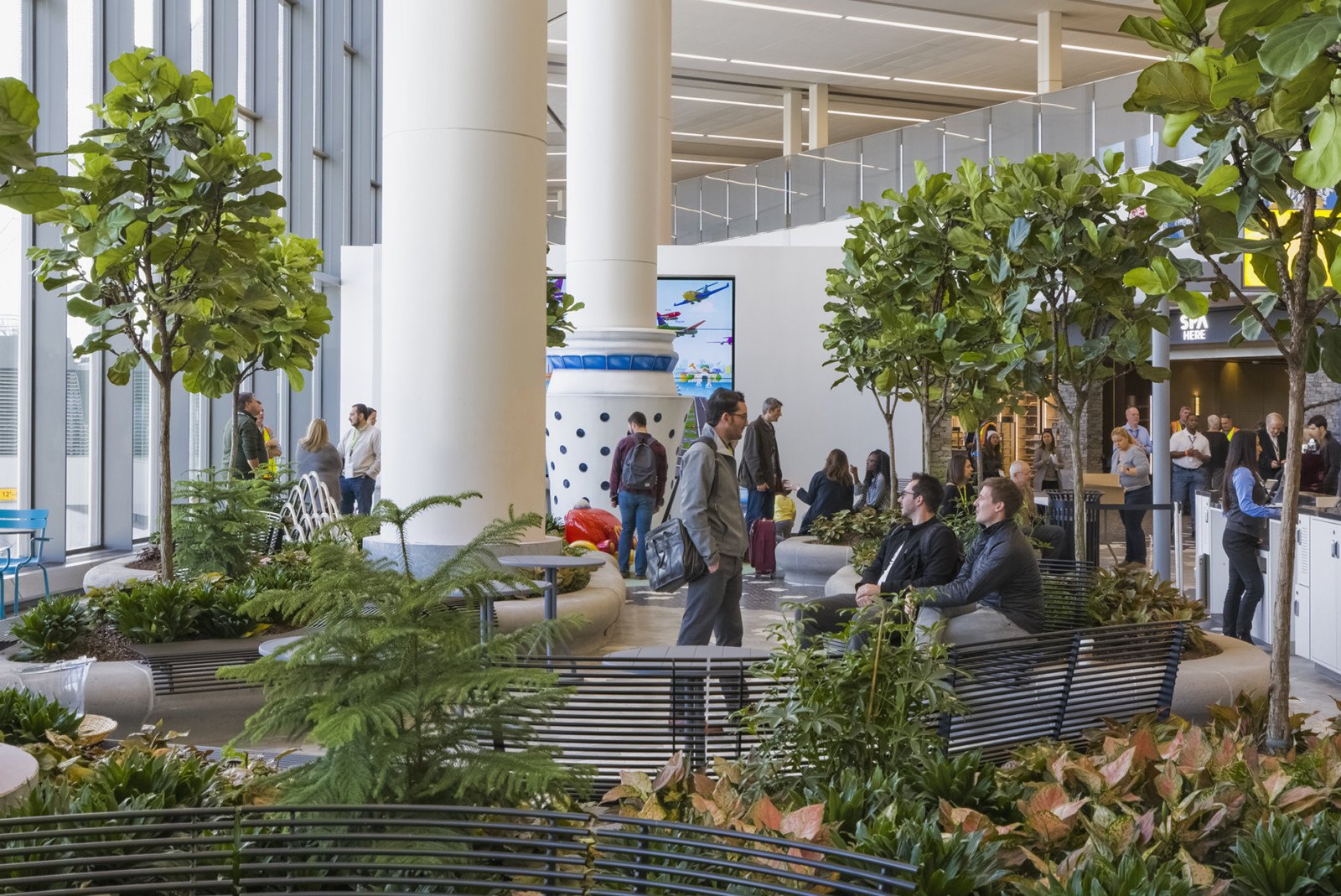
Flexibility and Operational Efficiency
The island concourses and pedestrian bridges offer more than a sleek appearance. They allowed the design team to move Terminal B 600 feet closer to Grand Central Parkway. This opened up two additional miles of aircraft taxilanes that will reduce airport ground delays as the terminal ramps up to its full capacity of serving 17.5 million annual passengers.
Inside the terminal, all check-in and passenger screening areas are located on the third floor. As needs change, this location will give Terminal B the adaptability to accommodate evolving security screening and technology. Instead of providing rigid parameters for each of its airline tenants, the ‘common-use’ design allows airlines to move easily within the terminal, expanding or shrinking their footprints within the terminal.
The design’s phased construction strategy allows the terminal to be built on the highly constrained site with minimal impact to operations, generating significant time and construction cost savings.
Under a 35-year lease agreement with the Port Authority of New York and New Jersey, LaGuardia Gateway Partners (LGP) will design, build, manage and maintain Terminal B. LGP includes Vantage Airport Group, Skanska, Meridiam, and JLC Infrastructure for development and equity investment. Vantage Airport Group leads the redevelopment program and management of Terminal B, with Skanska-Walsh as the design-build joint venture and HOK and WSP USA providing architecture and engineering.
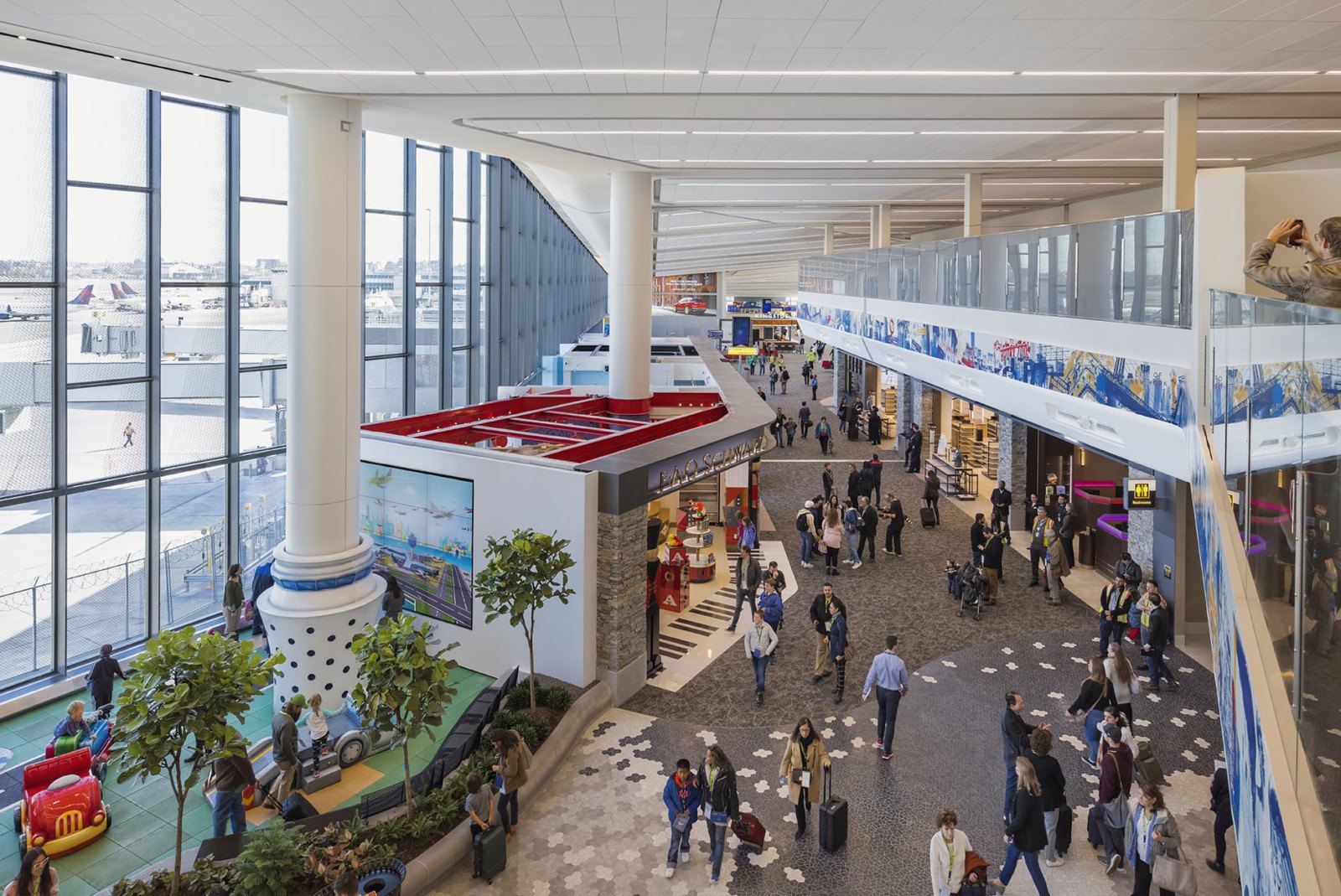
In developing the island-and-bridges scheme for the design competition, HOK’s architects and structural engineers first needed to quickly determine whether building two 450-foot-long steel truss bridges connecting the headhouse with the concourses housing the gates was a viable option.
Of Earth and Air
The team is targeting LEED Silver certification for the new Terminal B. Sustainable design strategies focus on ensuring optimal building orientation, providing flexibility for change, using natural and locally sourced materials, and making the terminal resilient to major storm events by placing critical systems above flood levels.
Strategic use of daylighting and clear lines of sight highlight important destinations, helping travelers intuitively move through the terminal while conserving energy by reducing the need for artificial lighting.
A solar thermal system will help generate hot water for restrooms.
Additional taxilanes created from the terminal’s island-concourse design reduce aircraft fuel consumption and pollution by cutting down on time spent taxiing and idling. Sensors on baggage handling systems decrease operational energy use.
